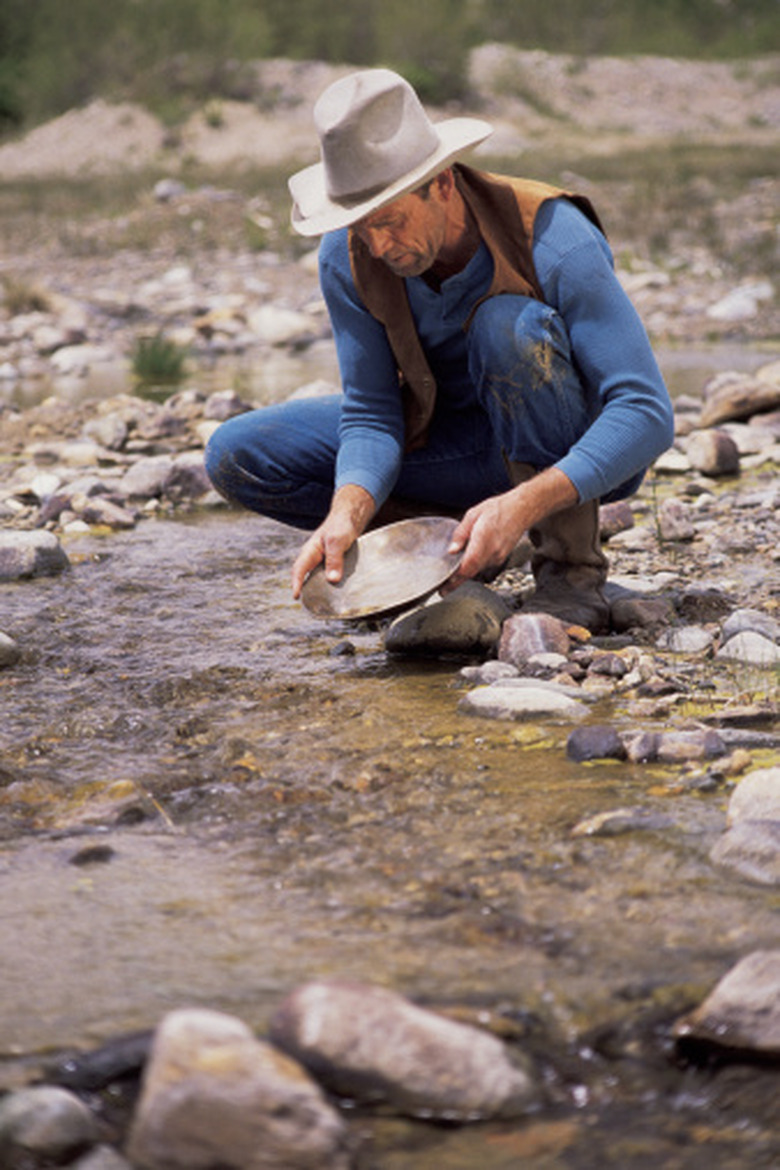What Are Placer Ore Deposits?
Throughout human history, placer deposits have been mined for treasures — gold, platinum diamonds and other gems. The ancient Romans got most of the empire's gold from placer mines throughout the empire. Placer deposits were at the center of the great gold rushes of the nineteenth century in California, Alaska, the Yukon, South Africa and elsewhere. Being at or near the ground surface, placer deposits are easy to mine, do not require the complex and expensive machinery needed for other types of deposits and provide almost immediate rewards to the prospector.
Formation of Placers
Formation of Placers
Placer deposits consist of minerals broken off by weathering from the rocks in which they formed, and subsequently concentrated by gravity aided by a winnowing or sifting process. The source of the mechanical energy required for the sifting includes streams or rivers, ocean waves, wind or glaciers. The placer deposit may form very near the bedrock from which it originated, or it could be at a great distance. The deposit may either be buried or exposed, or it could even be fossilized, if it was formed in the geologic past.
Stream Placers
Stream Placers
Stream placers usually originate at a mineral-containing exposure of bedrock on a hillside overlooking a river valley. The bedrock disintegrates by weathering, which initially forms placers adjacent to the bedrock called residual placers; these may creep further downhill and get trapped in a ravine part way down the hill to form eluvial placers. Finally, the placers reach the stream at the bottom of the valley to form stream placers, also known as alluvial placers; these are the most important type of placers.
Wind and Beach Placers
Wind and Beach Placers
In arid regions where there is no water, placers known as eolian placers form by wind action. Material broken from the bedrock disintegrates and the wind blows away the lighter rock matrix, leaving behind the placer containing the mineral(s) of economic value. Shore currents and wave action concentrate placers along beaches, from ore-bearing material that has either fallen from nearby cliffs or brought in by streams discharging into the ocean.
Placer Minerals
Placer Minerals
The sifting and concentration by gravity is possible only when the mineral is heavier than the surrounding geologic medium, resilient and hard to break down as well as chemically inert in its current environment. Diamonds and gold satisfy these requirements and are the best-known placer minerals; others include monazite, platinum and ilmenite and lesser gems such as garnets. Thorium — a possible alternate to uranium for fueling nuclear reactors — occurs in monazite, whereas tin is produced from ilmenite.
Famous Placers Deposits
Famous Placers Deposits
Gold producing placers are found in western North America — California, Nevada, British Columbia and the Yukon. Diamonds have been found in placers in Alberta, Canada. Beach sands in Florida host heavy-metal placers. Beach sands in southern India contain vast reserves of thorium, whose energy content exceeds that of the country's uranium reserves. Wind produced placers are found in Australia. Gold placers were first discovered by Europeans in the great Witwatersrand gold mining district of South Africa in the 1850s.
Cite This Article
MLA
Soonawala, Nash. "What Are Placer Ore Deposits?" sciencing.com, https://www.sciencing.com/info-8122422-placer-ore-deposits/. 9 January 2018.
APA
Soonawala, Nash. (2018, January 9). What Are Placer Ore Deposits?. sciencing.com. Retrieved from https://www.sciencing.com/info-8122422-placer-ore-deposits/
Chicago
Soonawala, Nash. What Are Placer Ore Deposits? last modified March 24, 2022. https://www.sciencing.com/info-8122422-placer-ore-deposits/
